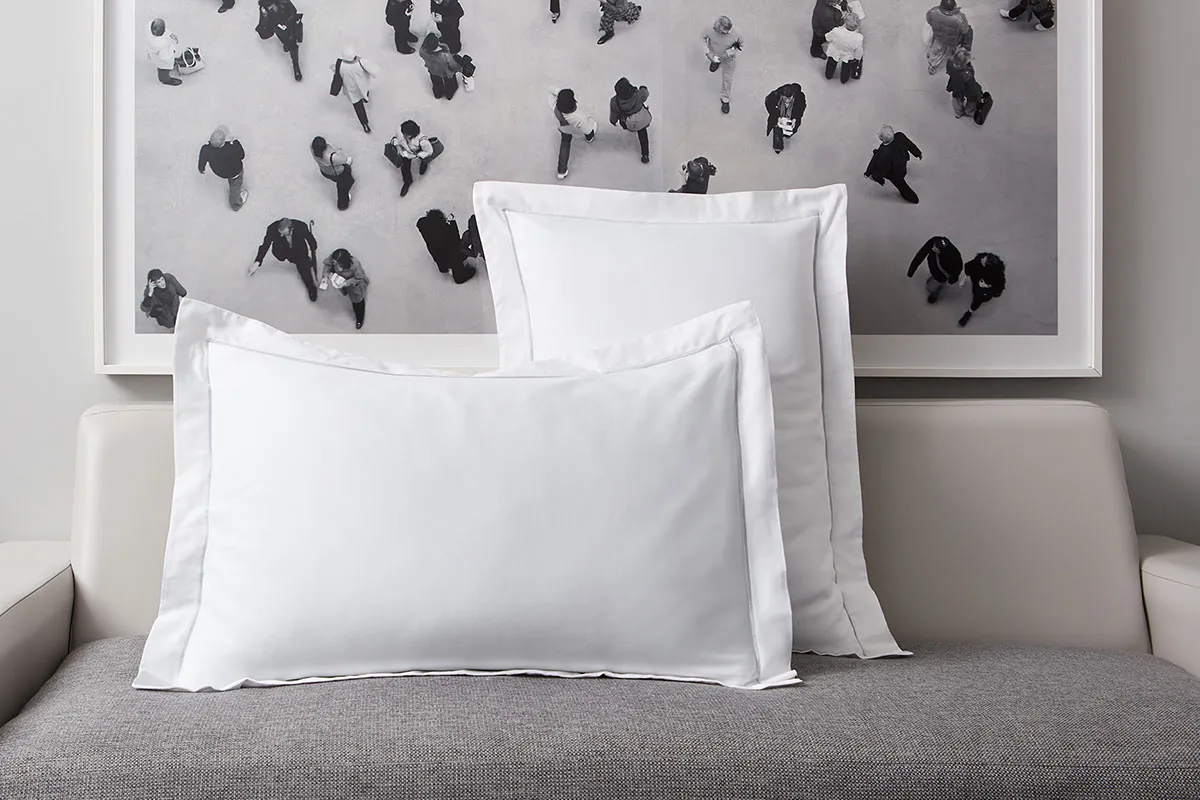
We often think about vacuuming our floors or wiping down surfaces when trying to reduce allergens, but the humble pillowcase plays a surprisingly big role too. Every night, your face presses against it for hours—so anything clinging to that fabric is coming into close contact with your skin, eyes, and nose. From dust mites to pollen, your pillowcase can collect a long list of unwanted irritants. That’s why taking a closer look at your bedding, especially your pillowcases, is so important. And if you’re on a budget, don’t worry there are cheap pillowcases for sale that still help reduce allergen exposure without sacrificing quality.
The Connection Between Allergies and Bedding
Allergens don’t just live outdoors. A large number of allergy triggers are found indoors, especially in your bedroom. Dust mites, pet dander, mold spores, and even bacteria thrive in warm, moist environments. Pillows and pillowcases are hotspots for these particles because they absorb sweat, oils, and dead skin cells. If your allergies flare up at night or when you first wake up, your bedding might be part of the problem.
How Dust Mites Thrive on Pillowcases
Dust mites are microscopic insects that feed on dead skin cells. They’re a major trigger for people with allergies or asthma. Pillowcases often become their feeding ground, especially if they’re not washed frequently. Cotton and other porous materials allow mites to burrow in, so it’s essential to wash your cases regularly in hot water and consider materials that make it harder for them to stick around.
Hypoallergenic Fabric Makes a Difference
The type of fabric you sleep on matters. Hypoallergenic pillowcases are made to resist the buildup of common irritants. These fabrics often have a tighter weave that prevents microscopic allergens from passing through. While no pillowcase can remove 100% of allergens, using a tightly-woven cotton or microfiber option reduces the amount that collects on the surface and seeps into the pillow underneath.
The Role of Frequent Washing
Even the best pillowcase won’t help if it’s not cleaned properly. Washing your pillowcases once or twice a week helps keep allergens at bay. Hot water is especially effective for killing dust mites and removing pollen or pet dander. Using fragrance-free detergents can also make a difference if you have sensitive skin or chemical sensitivities. The goal is to strip away whatever builds up overnight before it becomes a problem.
Pillowcase Material: What Works Best?
Not all materials are equal when it comes to allergy prevention. Cotton is a popular choice because it’s breathable and easy to clean. Microfiber is another solid option—it’s soft, durable, and tends to have a tighter weave, which means fewer allergens pass through. Bamboo is naturally resistant to bacteria and mold, making it another helpful option. Avoid wool or feather-filled pillows if allergies are an issue—they trap particles more easily and are harder to clean.
Pillow Protectors: A Secret Weapon
Pillowcases are your first layer of defense, but pillow protectors take it a step further. These zippered covers go under the pillowcase and block allergens from settling into the pillow itself. They’re especially useful for people with asthma or severe sensitivities. With both a protector and a quality pillowcase, you create a much better barrier against things that make you sneeze, sniffle, or itch through the night.
The Importance of Keeping Pets Off Your Pillow
Pet lovers, this one’s tough: letting your cat or dog sleep on your bed—especially your pillow—can worsen allergies. Pet dander and fur easily transfer to your bedding and can linger for days. Even if you don’t allow your pet on the bed while you sleep, their dander floats through the air and can still settle there. Washing your pillowcases more often can help, but it’s best to keep the pillow a pet-free zone altogether.
Humidity, Sweat, and Bacteria
Our bodies naturally produce sweat while we sleep, especially during warmer months. That moisture creates an ideal breeding ground for bacteria, mold, and yeast. If you’re not swapping your pillowcases often, that moisture stays trapped in the fabric. Over time, that buildup not only irritates your allergies but can affect your skin too. Breathable fabrics that wick away moisture help prevent this, but cleanliness is always the top priority.
Signs Your Pillowcase Might Be Causing Allergies
Waking up with a stuffy nose, itchy eyes, or sneezing fits could be a red flag. If these symptoms tend to fade as the day goes on, your bedroom environment could be the cause. Look for other signs like visible dust, yellowing fabric, or a musty smell—all of which suggest that your pillowcase has seen better days. Swapping it out for a clean one and adding a protector can reduce flare-ups almost immediately.
Simple Swaps That Make a Big Difference
It doesn’t take a total bedroom makeover to reduce allergens. Just swapping your pillowcases regularly and picking materials that help block irritants can lead to better sleep and fewer allergy symptoms. Try rotating a few pillowcases during the week so you always have a clean one on hand. Budget-friendly options still offer great benefits, so don’t think you need to spend a lot to breathe easier at night.
Final Thought:
Your pillowcase isn’t just a decorative element—it’s one of the most important tools in reducing nighttime allergen exposure. By washing it regularly, selecting the right fabric, and pairing it with a protective cover, you can sleep more comfortably and wake up feeling refreshed. Allergies can make restful sleep hard to come by, but small habits around your bedding can help you breathe easier every night.